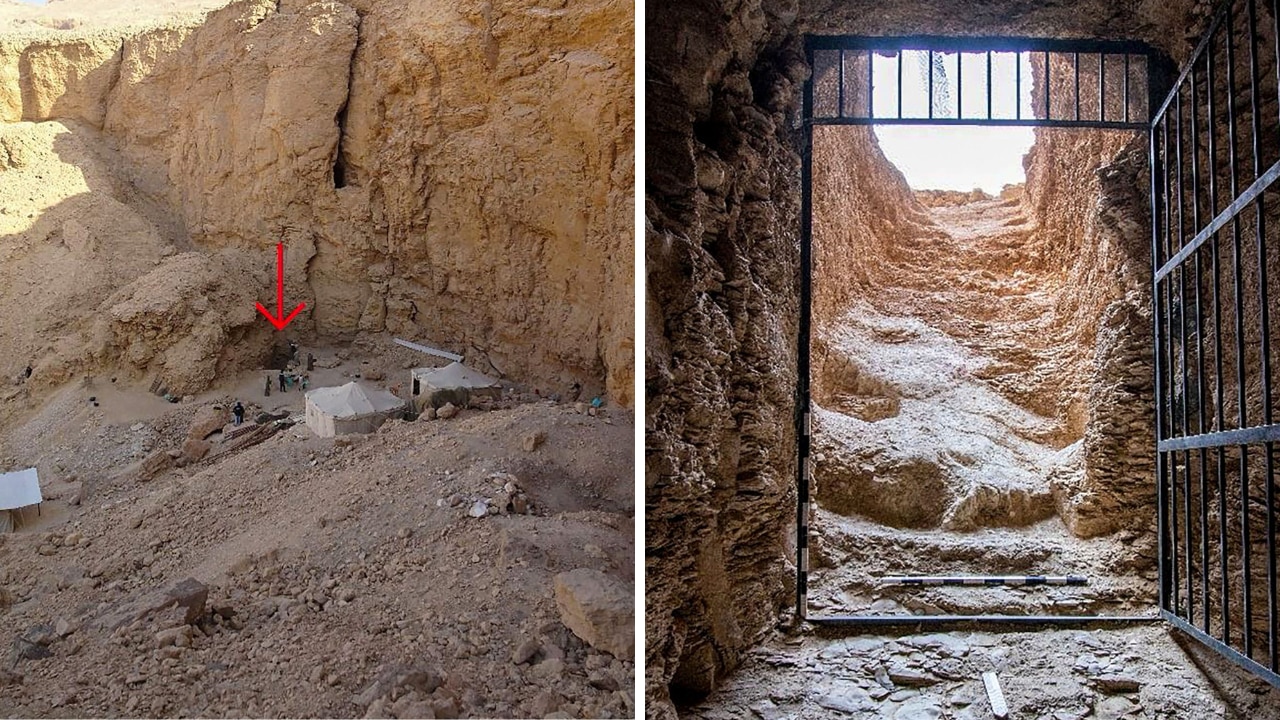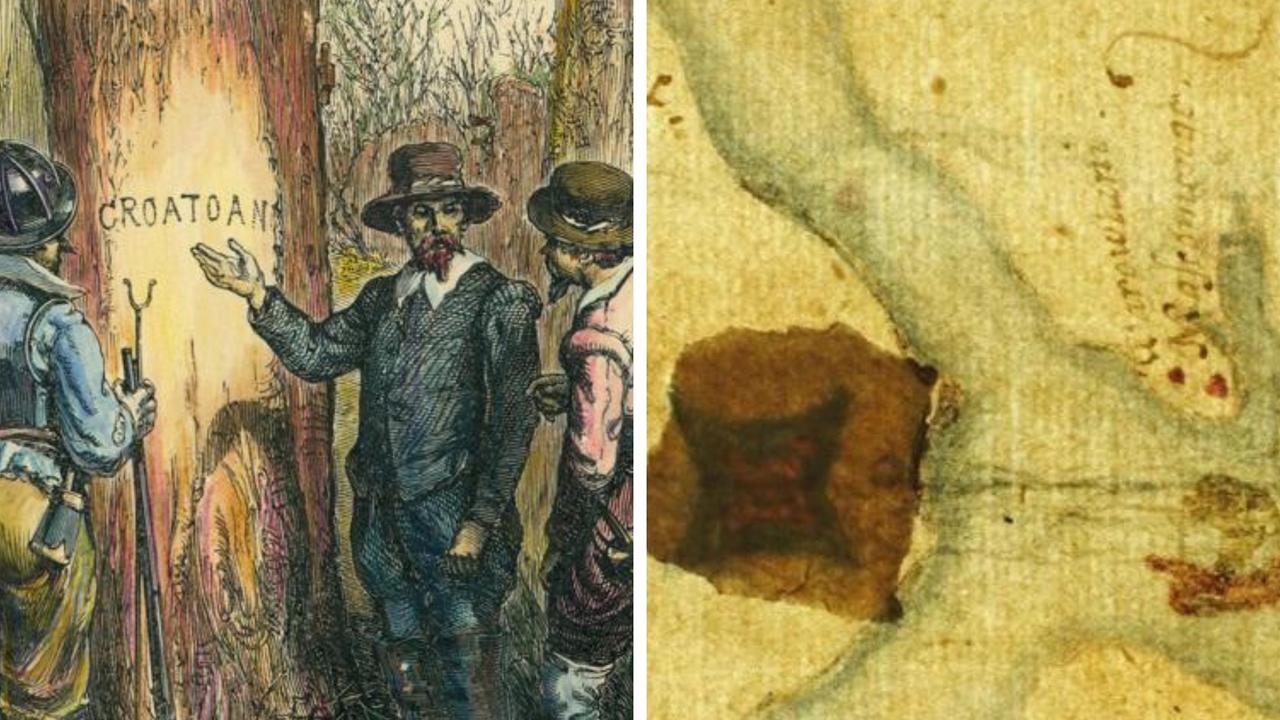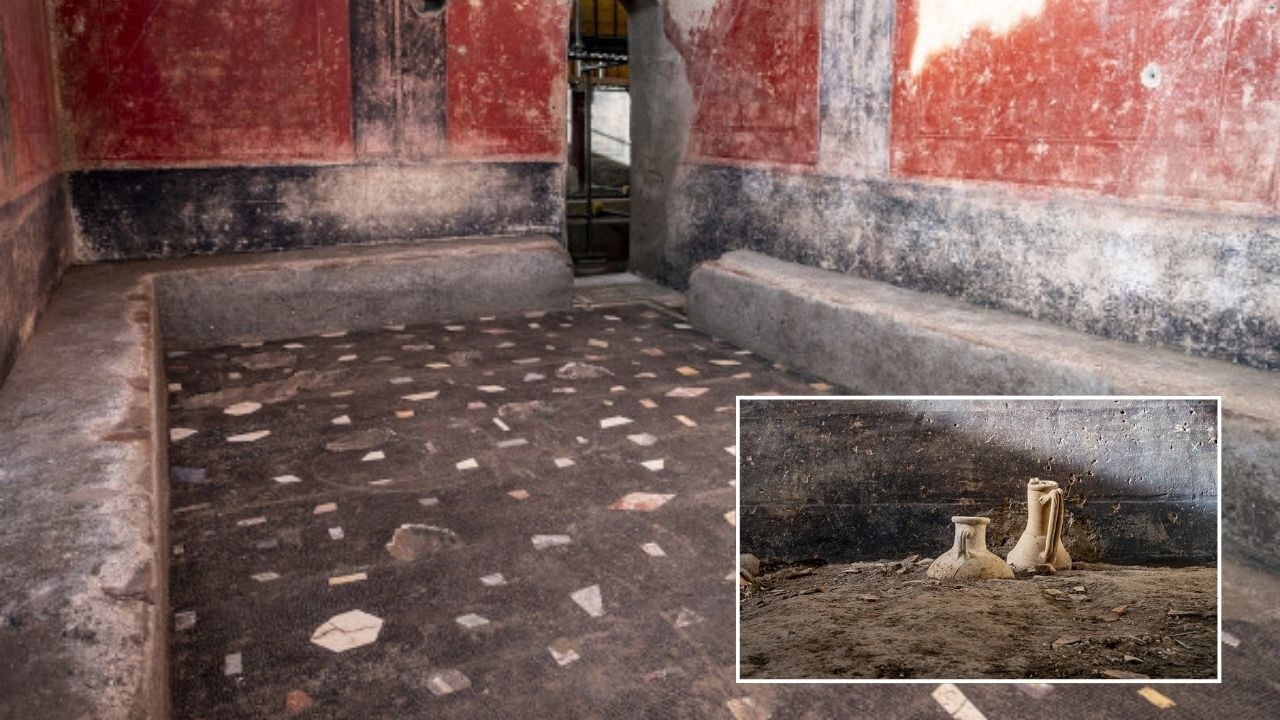Man’s life-changing Henry VIII find with metal detector
A UK man has made a shocking find with a metal detector, digging up a 500-year-old item that could change his family’s future.

Archaeology
Don't miss out on the headlines from Archaeology. Followed categories will be added to My News.
A man in the UK has made a shocking find with a metal detector, digging up a prized 16th Century jewel which has the potential to change the course of his family’s future.
Charlie Clark of Birmingham, England was feeling blue after his beloved dog died of cancer, when he decided to travel to a friend’s property in Warwickshire for a stroll.
Mr Clark, 34, brought along his metal detector, hoping to find time for the hobby he’d picked up just six months earlier.
When the device started to make its characteristic beeps on the rural property, Mr Clark thought he might have stumbled upon an old soft drink can.
Have a similar story? Get in touch — chloe.whelan@news.com.au
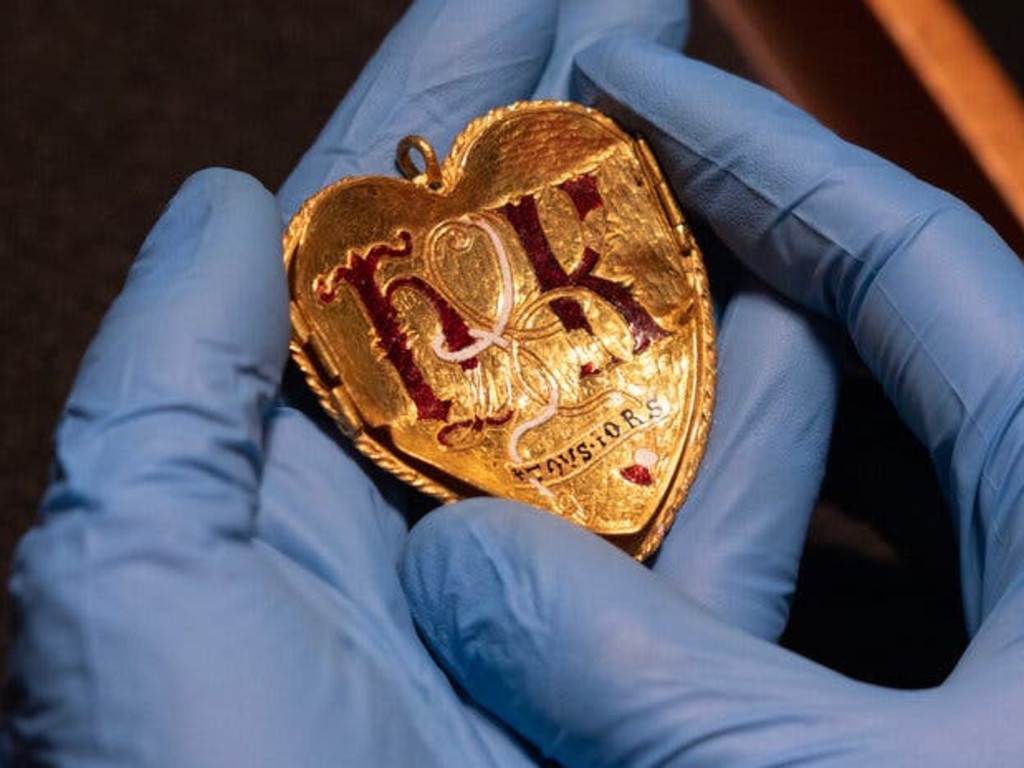
Instead, after a shallow dig into the earth, he pulled up a large, heart-shaped pendant hanging from a thick gold chain — and adorned with an intertwined ‘H’ and ‘K’.
The ornate pendant is emblazoned with a glittering pomegranate bush and a double-headed rose. The initials in question, recognised by Mr Clark’s friend, refer to none other than 16th Century monarch King Henry VIII and his first wife, Katherine of Aragon.
Henry VIII, a highly controversial leader, has inspired history courses and viral songs in the centuries since his death. His marriage to Katherine even sparked the formation of a new religion, when the king decided he wanted a divorce — later going on to marry another five wives, two of whom were beheaded.
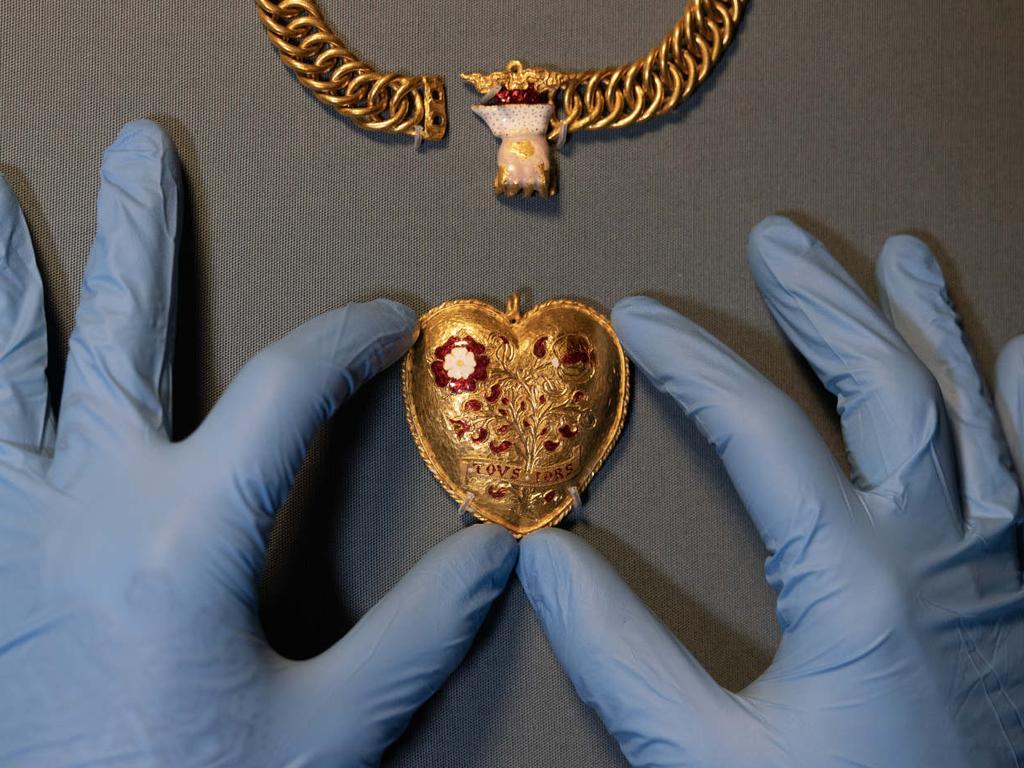
The golden love locket, which is almost 500 years old, is teeming with symbolism, with the pomegranate bush an emblem of Katherine, and the rose a symbol of the Tudor royal family starting in 1486.
After finding the pendant in 2019, Mr Clark brought it to an expert in Birmingham and later to the British Museum, where its authenticity was confirmed — and where researchers were left speechless by the priceless jewel.
The Birmingham expert was “shaking when she held it, her jaw was on the floor”, Mr Clark said in an interview with the New York Times.
“We all thought: ‘My goodness, is this for real? Could this possibly be?’” added Rachel King, curator of Renaissance Europe for the British Museum.
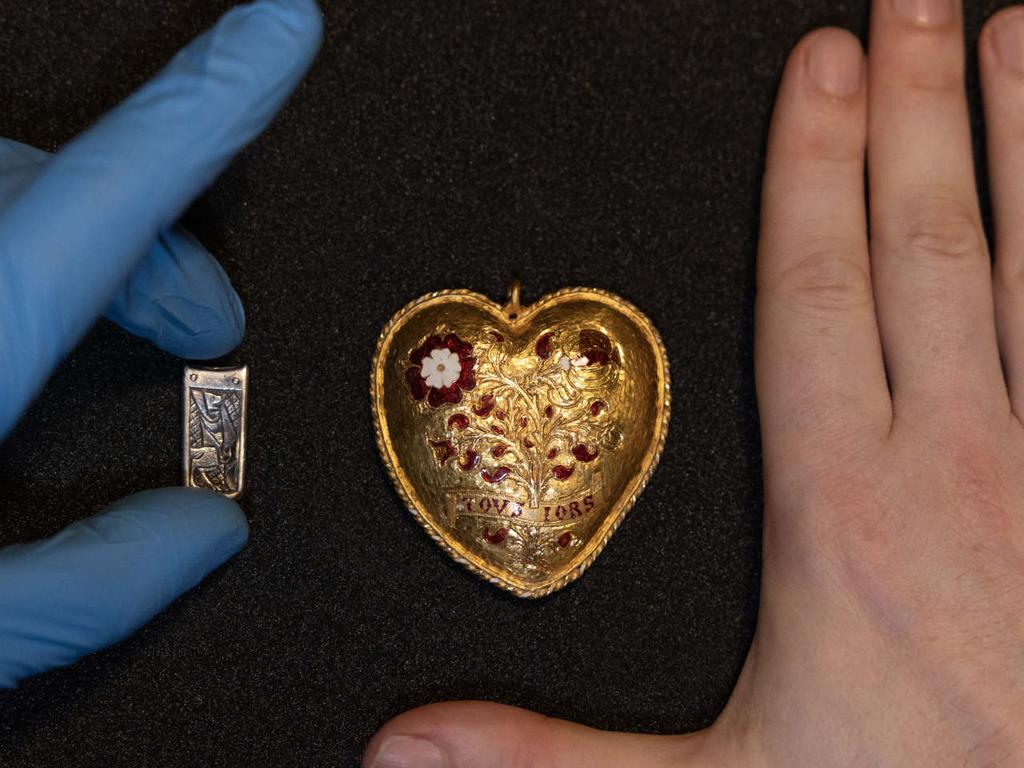
The jewel is unusual for its period, and appeared to be made in a hurry, Dr King said, guessing it may have been created as a prize for a tournament or special event.
It’s considered the most significant find in the 25 years since the British government began recording treasure, and the most significant find from the Renaissance era in 100 years.
Most items connected to Katherine of Aragon had been destroyed, and there was “very, very little that keeps her memory alive,” Dr King said.
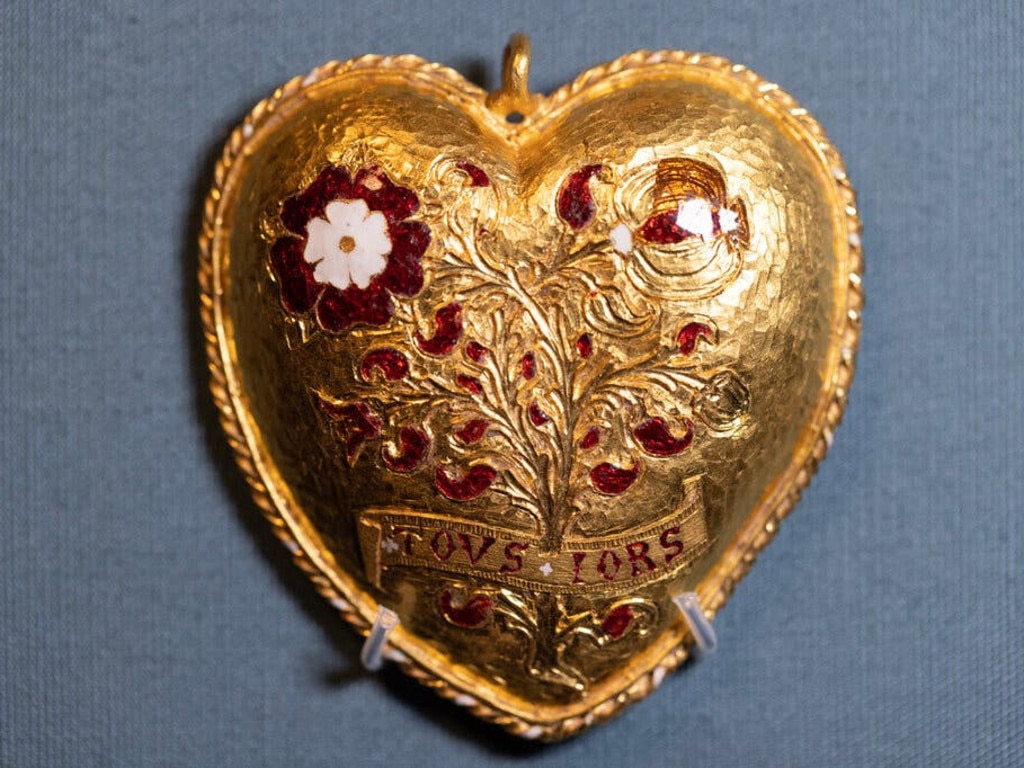
No one knows how the pendant might’ve ended up in a far-flung field in Warwickshire, but it may have been buried by someone trying to protect it or by a thief trying to hide their loot, she added.
By law, those who find treasure in Britain are required to report their finds, giving museums a chance to bid on them. The fee is then split evenly between the finder and the landowner.
Mr Clark said, once the item is sold, the hefty fee would be life-changing for his four-year-old son.
“Birmingham’s a pretty rough place, right where I’m from,” he told the publication.
“If I could get him some good education out of this, that’s the benefit of it all.”
Have a similar story? Get in touch — chloe.whelan@news.com.au
Originally published as Man’s life-changing Henry VIII find with metal detector





